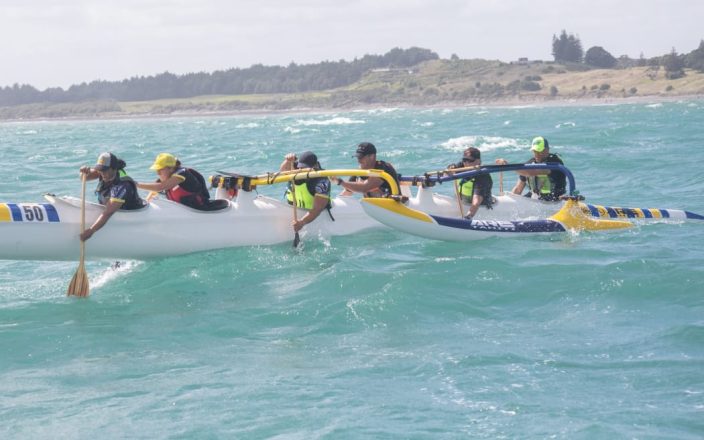タラナキの2人の警官、ブラッド・ハントリーとサイモン・ハワードは、それぞれの文化的ルーツを活かして、マオリの若者の犯罪を減らそうとしています。彼らは「テ・ハパイ・ホーム」という無料のワカ・マ・プログラムを作りました。このプログラムでは、マオリの文化、言語、系譜をまるごと没入感のある環境で学べます。このプログラムでは、運転免許証の研修や応急処置コースなど、実践的な支援も提供しています。
問題を抱えた若者たちと関わってきたハントリーは、犯罪統計にはマオリ語がよく登場すると指摘した。法務省が6月に発表した報告書によると、マオリの若者が警察による行動に直面する割合は、他の若者の2倍以上だった。
ハントリーとハワードは、テ・ハパイ・ホーを通じて、こうしたネガティブな傾向を変えたいと考えています。マオリの部族、ンガイ・タフ、ンガティ・ムトゥンガ、テ・アティアワの出身であるハントリーは、教師として7年間過ごし、生徒たちが家庭の問題で苦しんでいるのを見てきました。これがきっかけで、彼は教育、警察活動、パドリングへの情熱を結集してイニシアチブを立ち上げました。
このプログラムは、マオリの若者がそれぞれの文化とつながるワカアマを通じて、マオリの若者の身体的ニーズと精神的ニーズの両方を満たすことを目的としています。彼らはタヒチから高品質のカヌーを買って3万ドル近くを調達し、地元のイウィの協力を得てポート・タラナキのそばにスペースを確保しました。
ハントリーは、この場所が若者に癒される穏やかな環境を提供すると信じています。彼はこう言いました。「マオリにとって、パドリングは自然なことのはずです。私たちはワカを教えたり癒したりするのに使っています。」このプログラムは、ウォーリー・ハウマハ前副長官をはじめとする他の警察官からも強力な支持を受けています。
テ・ハパイ・ホームは2020年に始まりましたが、新型コロナウイルスの影響で勢いを増したのはつい最近のことです。政府によって導入された、論争の的になっている軍事スタイルのブートキャンプにはマオリの参加者が多いが、ハントリーは、マオリの若者には厳格な規律ではなく、支援活動と愛が必要だと主張している。
「ブートキャンプはマオリには向いていない。手っ取り早い解決策のようなものだ」と彼は言う。「ザ・ハパイ・ホープは長期的な解決策だ。私たちの目標は、若者を元気づけ、指導と機会を提供することです。」




















































-360x245.jpg)









